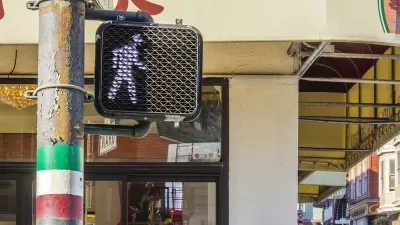A peak under the hood at "Ground Truth"—the operation behind Google Street View.
Greg Miller details the new layers of information that the Google Maps team is extracting from its operation "Ground Truth," or "a combination of algorithms and meticulous manual labor" that collects data and applies it in the form of Google Street View.
Since Google Street View launched in 2007, the Google Maps team has discovered that the data their cars collect can be used for much more than just spot checking their Google Maps data on the ground. "Those algorithms borrow methods from computer vision and machine learning to extract features like street numbers painted on curbs, the names of businesses and other points of interest, speed limits and other traffic signs," writes Miller.
Miller was granted behind-the-scenes access to the Google Maps operation fopr the article, enabling him to share a lot of the technical details behind Google Maps. His summation after his tour: "The maps, it seems, are only getting deeper."
FULL STORY: The Huge, Unseen Operation Behind the Accuracy of Google Maps

Planetizen Federal Action Tracker
A weekly monitor of how Trump’s orders and actions are impacting planners and planning in America.

Trump Administration Could Effectively End Housing Voucher Program
Federal officials are eyeing major cuts to the Section 8 program that helps millions of low-income households pay rent.

The 120 Year Old Tiny Home Villages That Sheltered San Francisco’s Earthquake Refugees
More than a century ago, San Francisco mobilized to house thousands of residents displaced by the 1906 earthquake. Could their strategy offer a model for the present?

Philadelphia Councilmember Proposes Transit Access Fund
The plan would allocate 0.5 percent of the general fund toward mobility subsidies for low-income households.

Texas Bill Would Ban Road Diets, Congestion Pricing
A Texas state senator wants to prevent any discussion of congestion pricing and could suspend existing bike lane and sidewalk projects.

USDOT Threatens to Pull New York Highway Funding
The Trump administration wants the state to kill New York City’s congestion pricing program despite its demonstrated success.
Urban Design for Planners 1: Software Tools
This six-course series explores essential urban design concepts using open source software and equips planners with the tools they need to participate fully in the urban design process.
Planning for Universal Design
Learn the tools for implementing Universal Design in planning regulations.
Ada County Highway District
Clanton & Associates, Inc.
Jessamine County Fiscal Court
Institute for Housing and Urban Development Studies (IHS)
City of Grandview
Harvard GSD Executive Education
Toledo-Lucas County Plan Commissions
Salt Lake City
NYU Wagner Graduate School of Public Service




























